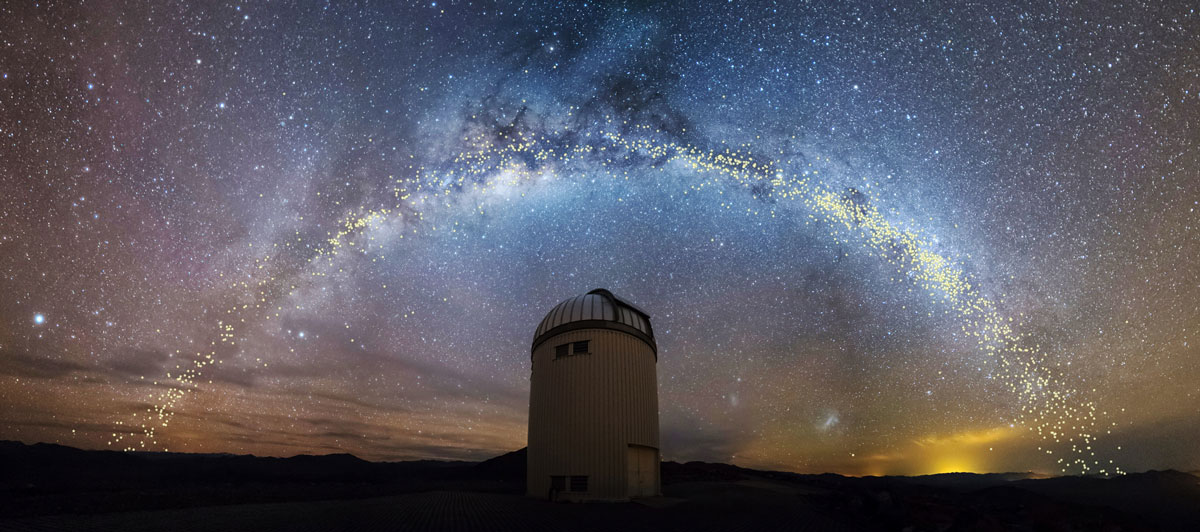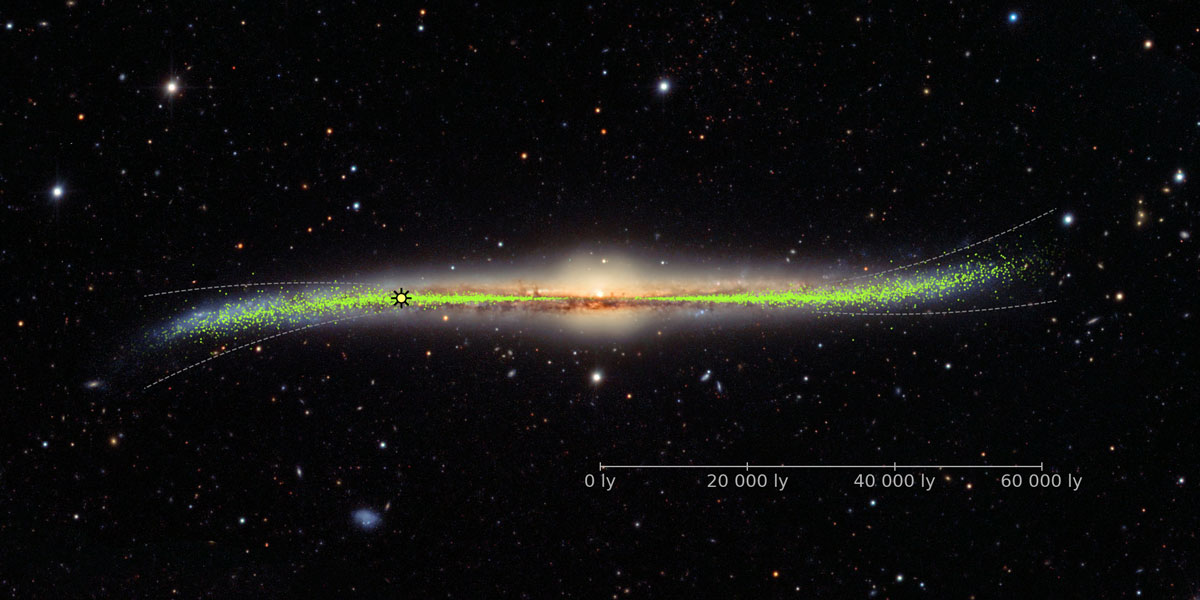A new 3D map reveals the S-shaped stellar disc that we call home.
A new map of the Milky Way confirms something researchers have long suspected: this galaxy is warped.
That’s right. The abiding sense of cosmic disarray you’re feeling is not just a sign of the times — it’s also a feature of our home in the stars.
The map, the first 3-D representation of the Milky Way, appeared last week in the journal Science. It shows that the vast collection of stellar bodies forms a distinct wavy S-shape.
Researchers at the Astronomical Observatory of the University of Warsaw tracked thousands of young stars, known as Cepheids, to precisely chart the galaxy from edge to edge, a span of about 120,000 light-years.
“We were amazed to see that the warp of the galaxy is so pronounced,” said astronomer Dorota Skowron, who led the work. “It is not some statistical fact available only to scientists understanding probability models. It is apparent by eye.”
Astronomers have understood since the 1950s that the galaxy is curved, but until now, they’ve based that idea on models and indirect measurements.
Over a six-year period, the researchers took more than 100 images of the galaxy from their observatory in the Chilean Andes. In particular, they monitored 2,400 stars called classical Cepheids, a category of “young” supergiants less than 400 million years old.

Cepheids burn hundreds or thousands of times brighter than our sun. That’s bright enough for the telescope in Chile to spot them, even those at the edge of the galaxy. (The most famous Cepheid is Polaris, the North Star.)
These stars’ brightness fluctuates at well-defined intervals. This makes it possible for astronomers to calculate the distance between them and our solar system. The researchers used those distances to construct their map.
It’s “the most accurate description of the warp of our galaxy,” Skowron said.
The map reveals a few intriguing details about the galaxy.
The charted Cepheids are all clumped together in the same region and are all roughly the same age. This suggests that star formation is concentrated in the galaxy’s spiral arms and “is happening in bursts,” Skowron said.
Cepheids are rare in the Milky Way. The researchers estimate that they measured all but about 1,500 of the objects. Some of the missing stars were not visible from the Southern Hemisphere. Others located near the galactic center were obscured by interstellar dust.
But the newly charted stars are enough to discern the shape of the galaxy in detail.
Viewed from the side, the Milky Way’s center is about 500 light-years thick. At its edges, the thickness flares to 3,000 light-years.
Stars in the far reaches of the Milky Way may be as far as 5,000 light-years from the galactic plane. That’s a vast distance, added Jan Skowron, a co-author of the study who is also Dorota Skowron’s husband.


The Milky Way is hardly the only warped galaxy in the universe. Up to half of all disk galaxies could be similarly flared at their outer regions, though not to the same extent.
Our galaxy’s distinctive shape may have been influenced by a number of cosmic forces. Gravity from neighboring dwarf galaxies may have helped contort the Milky Way’s previously flat disk. Interactions with intergalactic gas or dark matter could have contributed to the warping as well, the researchers said.
The new 3-D map can help scientists model how new stars are born and how they spread through the spiral arms of the Milky Way, Jan Skowron said.
“For the people, I just think that getting to know our place in the universe is a goal on its own, and is worth pursuing,” he said.
Credits: The galaxy map was programmed by Times data journalist Andrea Roberson using coordinates provided by Jan Skowron and the Astronomical Observatory of the University of Warsaw’s Optical Gravitational Lensing Experiment. Skowron also provided the warped grid. The z-axis of the map is scaled up 3 times to accentuate the warp. The sun is scaled up to serve as a reference point.